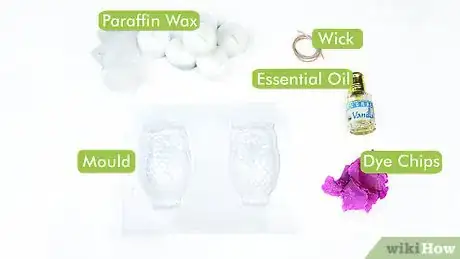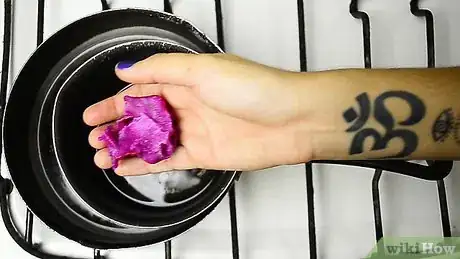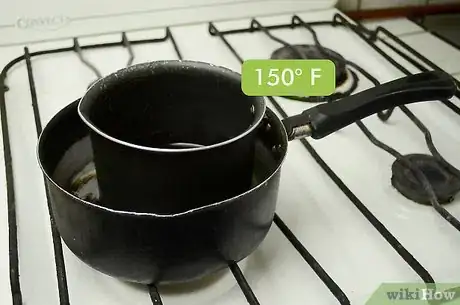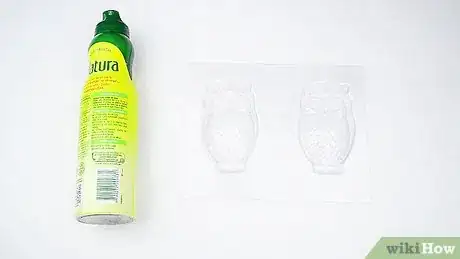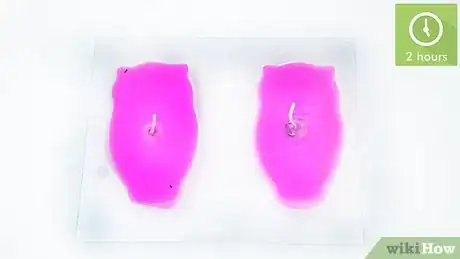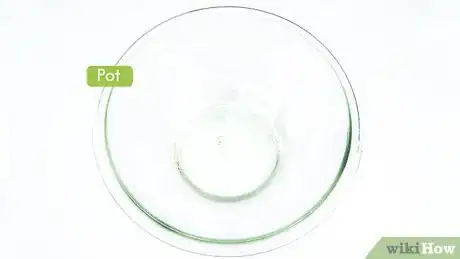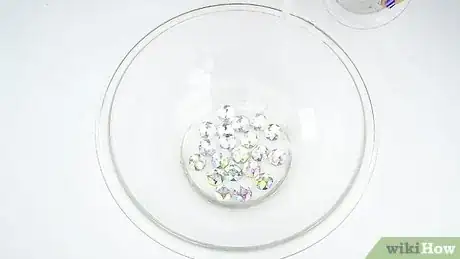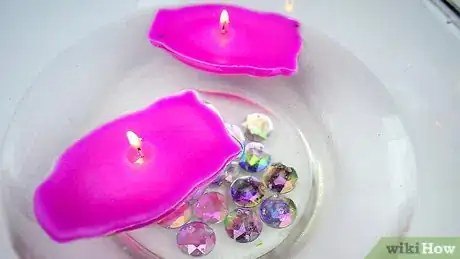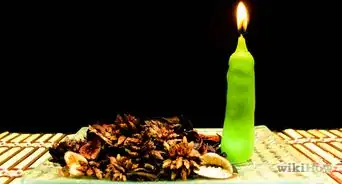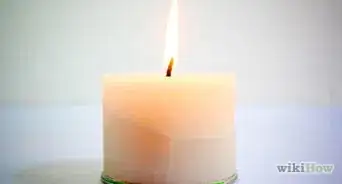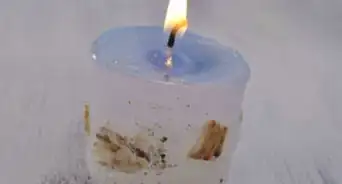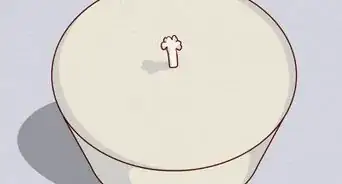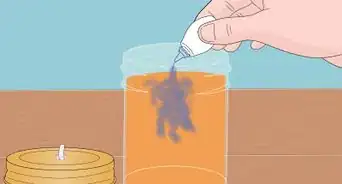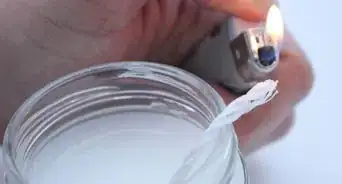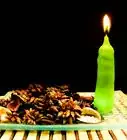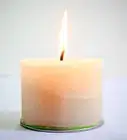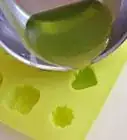This article was co-authored by wikiHow Staff. Our trained team of editors and researchers validate articles for accuracy and comprehensiveness. wikiHow's Content Management Team carefully monitors the work from our editorial staff to ensure that each article is backed by trusted research and meets our high quality standards.
There are 9 references cited in this article, which can be found at the bottom of the page.
The wikiHow Video Team also followed the article's instructions and verified that they work.
This article has been viewed 129,737 times.
Learn more...
Floating candles are lightweight candles that can float on top of water. They make a great addition to a dinner table for special occasions, and add a fantasy-based charm to whatever environment they're decorating. Fortunately, these candles aren't difficult to make from home. You can make them as big or as small as you'd like, and scent them however you will. If you're getting ready for a dinner party, wedding or seasonal event, floating candles are a great thing to keep in mind.
Steps
Making Floating Candles
-
1Gather your ingredients.[1] Ingredients for candles may be purchased at arts and crafts store. Quantities for each ingredient will vary, dependent on the size and amount of candles you plan to make. However, half a pound of wax equals to 10-12 small candles, and candles only require one wick each. You should check your mould tray for a point of reference if you're unsure about quantity.
- Paraffin wax.[2] Half a pound of wax should serve you well for a home set of candles. If you're feeling thrifty however, you can melt down old candles into fresh wax.
- Drops of essential oil. These are essential, and can be used if you want to give your candles a scent. Only a couple of drops per candle will be needed to get the scent.
- Baking tray mould. The size of your mould will determine how large the candles will be. Small muffin candles will burn for approximately one hour. Large muffin tray candles will go on for about three.[3] Tart moulds and cookie cutters can be used as well for this, so long as there's a moulded slot for a candle to settle in.
- Pretabbed candle wicks. Making sure to get pretabbed wicks can take some of the hassle out of adding them into the wax.
- Dye chips.[4] Dye chips are specifically made for use in homemade candles. They're small, but effective, so you'll probably only need around one per candle. You can eyeball the effects of the dye chips as you add them.
-
2Place wax in a double-boiler and heat to 185 degrees.[5] A double boiler or hot plate will suffice while heating your wax. If you're using a double boiler, bring the outside water to a boil first before adding the wax. A double boiler is prepared by filling a larger pot with water to boil, and setting a smaller pot in the middle. The boiling water on the outside will heat up whatever's inside the smaller pot.[6]
- Do not apply direct heat to candle wax. It can catch fire if you do.
- An empty coffee can will suffice for heating candle wax if you don't have an extra pot or pitcher to place in your double boiler.[7] A small coffee can is a good alternative for someone who doesn't have a pot large enough to make a double boiler.
Advertisement -
3Introduce dye chips while heating.[8] Dye chips will give your candles a pleasant colour. One dye chip per pound of wax should be enough to ensure a bold colour. It's important to add your dye while the candles are heated. That way, they'll be able to disperse throughout the wax with stirring. Dye chips are designed specifically for use in DIY candle-making, so they tend to mix with wax very well.[9]
- Mix it in with a wooden spoon to ensure the dye is consistent in the candles.
- Essential oils are added for the sake of scent, and should be added to the pot as soon as you've turned off the heat.
-
4Heat the wax. Paraffin wax needs to be 150 degrees Fahrenheit in order to be ready for pouring.[10] If you have a thermometer at hand, place it in the wax and gauge the temperature. Check the consistency periodically. You can do this by placing a wooden spoon in the boiler pitcher and gently stirring the wax around.
- If you don't have a thermometer, wait until a thin film forms around the edges of your pitcher.[11]
-
5Coat your tray with cooking spray.[12] If you don't coat your mould with cooking spray or petroleum jelly before hand, your candles will put up a hassle when you try to take them out. Because you'll ultimately be taking them up held by their fragile wick, you'll want to minimize that resistance early on.
- Excessive spray isn't necessary. Just make sure the bottom of each mould slot is evenly sprayed. Being thorough at this stage prevents hassle later down the road.
-
6Pour your wax into the tray slots.[13] Once the heat is off, pick up the pitcher with wax. Pour it into each of the holes in your mould, and try to get the wax as evenly distributed as possible. If you don't have enough, you should be able to eyeball how much more you'll need to heat to finish the job.
- Pour slowly and steadily. The wax will be hot, and pouring it quickly could risk injuring yourself.
- Cookie cutters are a great alternative. You'll be able to make interesting shapes out of your candle wax.[14] To make a cookie cutter into a mould, run masking tape along the edge and bend the cutter so it can rest firmly on a sheet of aluminum foil. This will be a good makeshift foundation for the candles to rest upon.
- Muffin tray are the most common choice for homemade candle moulds. However, you can use just about any type of mould your kitchen has to offer, so long as the slots are small enough to make working floating candles.
-
7Add the wick. Give the heated wax a few minutes to settle and cool. From there, you should be able to add wicks with the hopes they'll stand up in the wax. Tabbed wicks are generally easier to add because the tab helps to guide and secure the wick in place.
- You can use a toothpick or bamboo skewer to fix the wick after adding it if it falls.[15]
-
8Allow the candles time to harden. Once the wicks have set, candles take up to two hours to harden completely.[16] Set them aside, and occupy your time with something else while they settle.
-
9Remove candles from tray. Once your candle have been given enough time to settle, pull them up gently using the wicks. Use a piece of paper towel to wipe off any extra gunk away from the candles once they've removed and ready to set.[17]
- If you try to take out the candles too soon, they'll become harder to remove. If you've made this mistake and want to fix it, put them in the freezer for a few minutes, then take them out and try again.[18]
Presenting the Candles
-
1Pick a pot or vase.[19] You can use any sort of pot or vase, so long as its clear. You should aim for one with a wide base to ensure the most room for candles. Glass orbs with a to-the-side opening are a great choice with floating candles, as the surrounding glass helps intensify the flame light.
-
2Add decorative gems or sand to the vase bottom.[20] Floating candles are all about creating an ethereal atmosphere. You can get this impression further across by decorating the base of the vase. Adding sand to the bottom will give the vase an aquatic vibe. Using decorative gems will give your vase fantasy-based atmosphere.
- Clear and coloured stones are both welcome additions to the base of the vase as well.[21]
- It's best to keep your base to a single type of decoration. Otherwise, it will look messy and hurt the atmosphere.
- Shake the pot gently around to get the stones evenly across the base. Make sure you add the stones before the water to avoid making a mess when you spread the foundation.
-
3Add water to the vase. For the maximum effect, you should fill your vase between 50-75% with water. Add your stones or other base decorations to the vase before filing with water. This will eliminate the risk of splashing, and make it easier to even out the stones across the base.
-
4Place candles in the vase. Place the unlit candles gently in the pot holding the wick. Don't try to put them in holding the wax, as you'll risk capsizing them in the water. Continue to add the candles until the pot begins to look crowded. Try not to overcrowd the pot, as this will hurt the peaceful aesthetic you're trying to create.
-
5Light your candles. If your pot as a wide opening and there aren't a lot of candles, you can light them with a regular pocket lighter. In most cases however, a trigger-operated firestarter is preferable. With a firestarter, you can stick the fire nozzle into the pot without the risk of burning your hand in the process.
Community Q&A
-
QuestionIf I kept the mold on, would I be able to put fish in the bowl to make it look even prettier? The molds would prevent the wax from leaking into the water and hurting the fish, right?
 Community AnswerYes, this would work. You would want to change the water every day or every other day to prevent water getting into the mold, though.
Community AnswerYes, this would work. You would want to change the water every day or every other day to prevent water getting into the mold, though.
Warnings
- As with any fire-based decoration, make sure not to put the candles close to anything flammable. In the event that something does catch fire, you can use the water from the vase as an ad hoc extinguisher.⧼thumbs_response⧽
References
- ↑ https://www.candlescience.com/learning/how-to-make-floating-candles
- ↑ https://www.candlescience.com/learning/how-to-make-floating-candles
- ↑ http://www.marthastewart.com/269549/light-up-a-table-with-floating-candles
- ↑ https://www.candlescience.com/learning/how-to-make-floating-candles
- ↑ https://www.candlescience.com/learning/how-to-make-floating-candles
- ↑ http://www.rachaelraymag.com/blogs/rachael-ray/2013/06/11/technique-how-to-diy-double-boiler/
- ↑ http://support.candlescience.com/hc/en-us/articles/201389130-How-to-melt-wax-using-a-double-boiler-
- ↑ https://www.candlescience.com/learning/how-to-make-floating-candles
- ↑ https://www.candlescience.com/color/reddigglo-dye-chips
- ↑ http://www.marthastewart.com/269549/light-up-a-table-with-floating-candles
- ↑ http://www.marthastewart.com/269549/light-up-a-table-with-floating-candles
- ↑ http://www.marthastewart.com/269549/light-up-a-table-with-floating-candles
- ↑ http://www.marthastewart.com/269549/light-up-a-table-with-floating-candles
- ↑ http://www.marthastewart.com/269549/light-up-a-table-with-floating-candles
- ↑ https://www.candlescience.com/learning/how-to-make-floating-candles
- ↑ http://www.marthastewart.com/269549/light-up-a-table-with-floating-candles
- ↑ http://www.marthastewart.com/269549/light-up-a-table-with-floating-candles
- ↑ http://www.candletech.com/candle-making/tutorials/floating-candles/
- ↑ http://www.save-on-crafts.com/floatcan.html
- ↑ http://www.save-on-crafts.com/crystaldiamond1.html
- ↑ https://www.candlescience.com/learning/how-to-make-floating-candles
- Videos provided by JK Arts
About This Article
To make floating candles, start by placing wax in a double-boiler or hot plate and heating it to 150 degrees Fahrenheit or until a thin film forms around the edges of the pot. You can also add some dye chips to the wax to give your candle a bolder color. Next, pour your melted wax into molds such as cookie cutters or muffin tins, give them a few minutes to settle and cool, and add wicks to the wax. Once the wicks are in, let the candles harden for 2 hours. After removing them from the molds, place the candles in vases filled with water, light them, and watch them float. To learn how to present your floating candles, keep reading!
